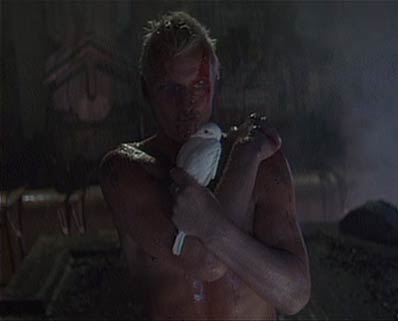Year: 1995
Directed by: Mamoru Oshii
Written by: Kazunori Itô, Shirow Masamune (Manga)
IMDB Reference
Degree of Cyberpunk Visuals: Very High
Correlation to Cyberpunk Themes: Very High
Key Cast Members:
Major Motoko Kusanagi: Atsuko Tanaka
Batô: Akio Ôtsuka
Section 9 Department Chief Aramaki: Tamio Ôki
Togusa: Kôichi Yamadera
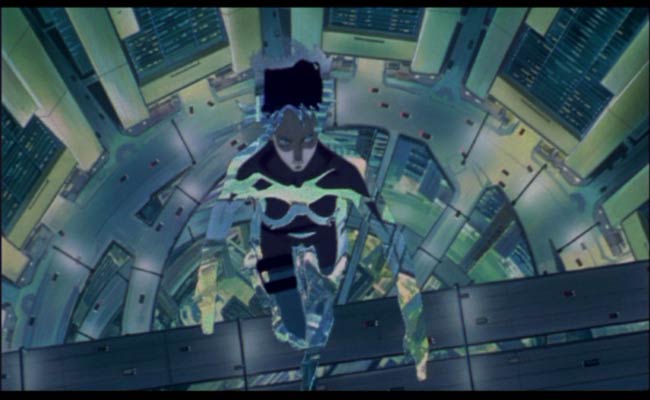
And where does the newborn go from here…the net is vast and infinite…
Overview: After Akira, a case can be made for Ghost in the Shell being the most influential anime ever. While Akira was the first anime to crack international markets, GITS rose anime to something “real,”, and opened the doors for events like Disney’s pursuit of Miyazaki, and eventually, the truly incredibly pace of anime we see today. More important for cyberpunk films, GITS provided a myriad of thoughts and visuals that have been expanded upon in virtually all subsequent cyberpunk animes. James Cameron refers to GITS as the first truly adult animation film to reach a level of literary and visual excellence.” In addition to a wonderfully complex and introspective story, we get heart-thumping, realistic action, all served up with some incredibly revolutionary animation techniques that places GITS on a juicy platter for all to enjoy.
~ Fair warning - there are a few plot spoilers below in the matrix discussion - I simply couldn’t write this, especially with linkages to the Matrix without including an interpretation of the ending of GITS. ~
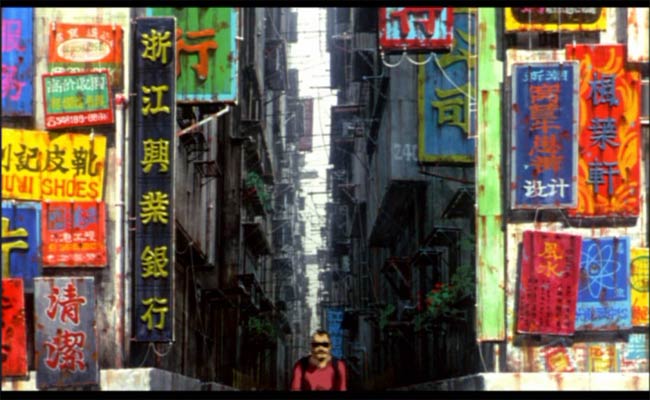
GITS shows us a very realistic looking near future set in the year 2029. The visuals are intricately detailed and depict grunge settings next to the highly sanitized corporate world. In 2029, people have the ability to augment their bodies with cybernetic replacement parts. In some cases, people have almost fully replaced their human bodies, leaving only their brain encased in a cyborg shell. The brain is even augmented with hyper-intelligent access to knowledge and communication packages. But the person, and we use that term loosely now, still has a ghost, or soul if you will - an emergent property of life that separates a human from a robot. Even though the majority of their human material is replaced with a cyborg-like shell, if the individual retains their ghost, they still retain their personality and individuality - their humanity if you will.
This cyborg shell is not the same as a robot. The limbs and body still communicate with the brain in a digital nervous-system-like operation. If we include Masume Shirow’s vision (the writer for GITS), the cyborg’s sexual parts are even fully functional. This means that in essence, their cyborg shell aids in the creation of an individual’s ghost. While this is terrific, a downside is the ability for evil-doers to engage in Ghosthacking - or the taking over of someone’s perceptual control, or worse, augmenting their artificially enhanced memory.
The story centers on Major Motoko Kusanagi, an almost fully mechanically enhanced cyborg secret operative working for Section 9 - Japan’s anti-terrorism division. As the movie progresses Motoko and her cyborg partner, Batau start to uncover a plot involving another ministry that seems to be engaged in a cover-up. Eventually, we find that this cover-up involves a seemingly nefarious hacker named the Puppet Master. In pursuing the Puppet Master, Motoko finds out that all is not what it seems- that in fact the Puppet Master is a sentient program, and never had a body. More interesting, the Puppet Master has been looking for Motoko!
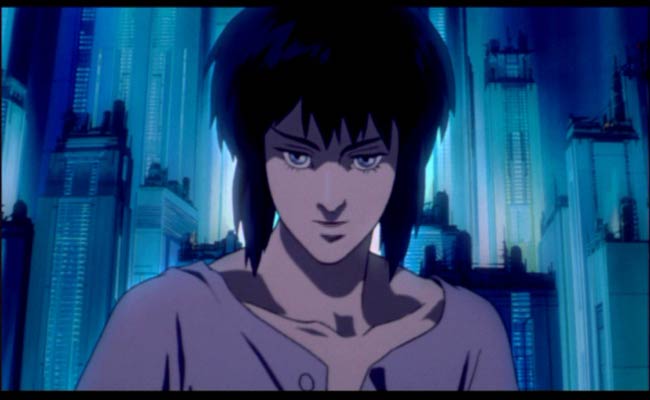
Revolutionizing Anime: Oshii revolutionized animation in GITS with a myriad of new and innovative computer graphics techniques. In short, Oshii pushed the boundaries for state-of-the art animation with GITS. Oshi scanned his animation cells in to a digital system so that he could import them into an editing suite to get all sorts of cool lens effects. For instance, in the above pic, Oshii is able to emulate a contra-pull type effect where the camera moves back, and the lens moves forward. In viewing this, the background expands while the foreground eerily stays in the same place. This works wonderfully for Motoko’s questioning of humanity speech. And this is only one of many interesting used of digital shots. Other techniques include interesting overlays that depict either brain activity or maps, for instance.
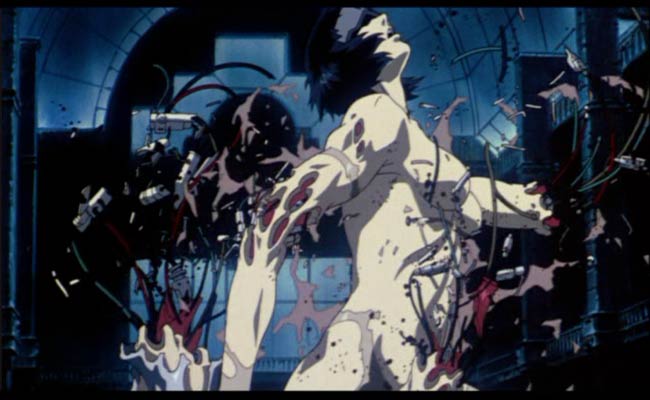
Questioning Humanity: Ghost in the Shell still provides anime’s the best examination in the questioning humanity. GITS is dominated by an ongoing discussion of what it means to be human and really, what it means to be alive. Is Motoko really still human? Even she doesn’t know the answer anymore, and actually questions whether she really has a ghost (how would she be able to differentiate a fake ghost from a real one?). This line of questioning is artfully developed in a way that makes Motoko the character in all of anime that I empathize with the most. You truly feel for the dilemma she finds herself facing.
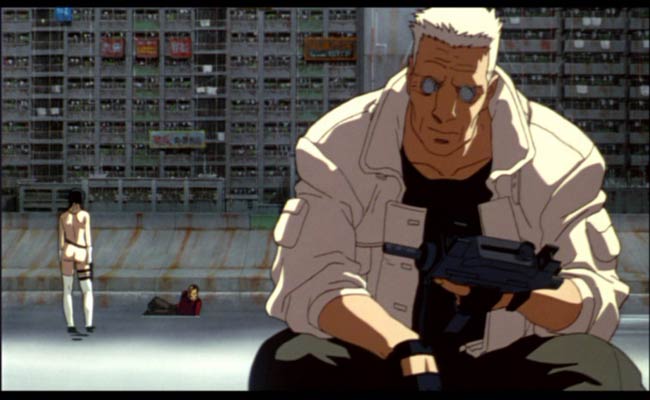
What is the Matrix? If we examine the Matrix, we find that both the visuals and storyline are heavily influenced by Ghost. There are some rather explicit visual “nods” in the first Matrix, including the opening digital sequence, Mr. Smith’s building jump where he breaks the concrete beneath him (this is virtually identical to Motoko pursuing the first puppet victim), and the shooting of the fruit stand where Neo is running near the end. On top of this, we have a reversal of roles in the Matrix, where Neo plays Motoko and Trinity emulates Batau. And again, the Wachowskis make no bones about where their influence came from - they, as much as anyone, have contributed to Ghost’s ever increasing popularity.
In looking at the storyline, we find even more interesting parallels. Ghost in the Shell ends with Motoko merging with the sentient program called the Puppet Master (Project 2501). This allows the Puppet Master produce a diversity of offspring that is simply not possible to do with copies alone. This has a direct parallel to the scifi view of Neo in the above review. While Ghost in the Shell 2: Innocence is the philosophical sequel to Avalon, the Matrix trilogy is just as clearly the sequel to Ghost in the Shell. Whereas GITS ends with this merging of a sentient program with a human ghost, the Matrix expands on this idea. We see Neo take the same journey, but in a very different way. He conducts this symbiotic merging over 3 movies whereas Motoko does this in a matter of minutes. We see Neo, through this merging of sentient program with a human, become the “one” - an omnipotent style being. This characterization is similar to the characterization that Batau gives of Motoko in GITS2 in his dogs and gods versus flawed humans speech.
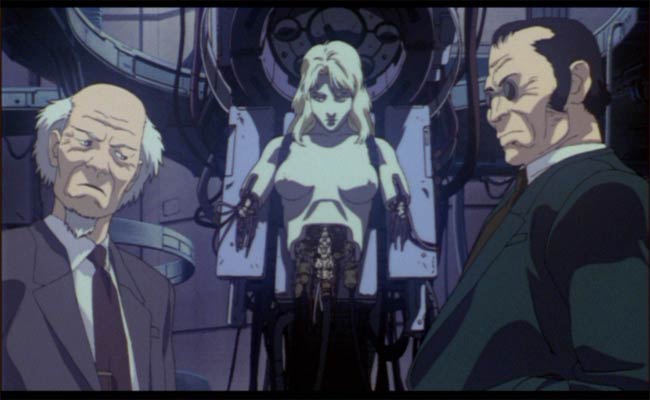
Also interesting is the linkage between the puppet master’s desire to digitally produce offspring with Neo’s reloading of the Matrix. The puppet master discusses this at the end of GITS in the “Life perpetuates itself through diversity and this includes the ability to sacrifice itself when necessary” monologue. If you trace the linkages, Neo’s reloading of the Matrix this is a method for the sentient program portion of Neo to create diversity and offspring. The merging of Neo allows the sentient program to grow and develop in ways simply not possible by itself. Familiarity with Neo’s Ghost allows it to make the changes necessary to correct the errors that build up in the current Matrix that prompt the battery people to disbelieve their surrounding.
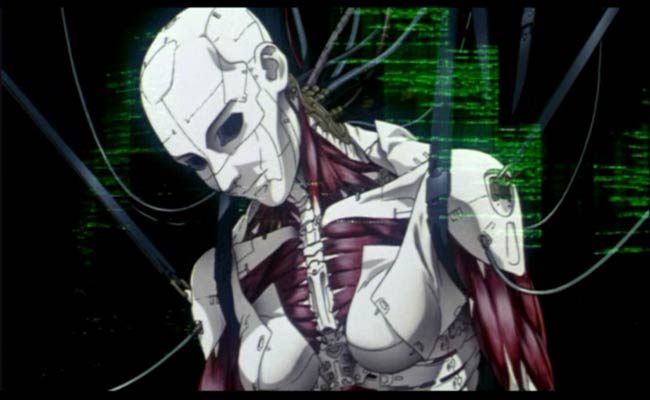
Finally, Ghost gives us a truly interesting vision of the future. We get sound astoundingly realistic and grungy cityscapes that are filled with the most impressive technological horrors. Is it truly a stretch to imagine that technology will augment our physical abilities? This is the bionic man taken to another level. On top of this, if we truly can learn to connect manufactured parts to our nervous system, is it really that far of a stretch to imagine that our brains become augmented? And over time, is it truly a stretch to believe that the line between humanity and robot won’t be blurred? GITS questions these articles of faith in such a believable way that we have seen a shift in our overall thinking on this issue.
The Bottom Line: Truly, even if you ignore all this philosophical stuff, Ghost in the Shell is simply an awesome movie! The action is terrific, the visuals are great, the soundtrack is devine…I could go on and on. If you just see one anime, Ghost in the Shell, still my favorite anime, is hands down the one to get.
Page 2: More GITS Screencaps –>>
~See movies similar to this one~
Tags: cyberpunk movie review anime ghost shell
Year: 2004
Directed by: Kazuaki Kiriya
Written by: Kazuaki Kiriya et al.
IMDB Reference
Degree of Cyberpunk Visuals: Very High
Correlation to Cyberpunk Themes: High
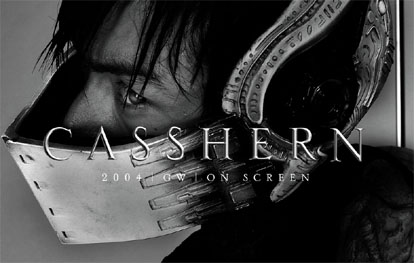
Overview: Like Immortel and Sky Captain, Casshern was one of the first movies filmed entirely on Blue or Green Screen. Casshern is by far the most ambitious of the three movies in terms of story complexity, symbols and messages conveyed, and in the scope of experimentation with visual effects. Unlike Sky Captain, this is NOT a feel-good Raiders-like fun romp. And unlike Immortel, which is also complex in scope, Casshern largely meets its intent from a story perspective. While Casshern is philosophically dense (I haven’t seen the anime yet, is it philosophically dense as well?), it does have some terrific action sequences. One of the best samurai sword duels I’ve seen happens here, as does some terrific robot vs. human fights. With its hard rock accompaniment, the action is almost matrix-like in quality.
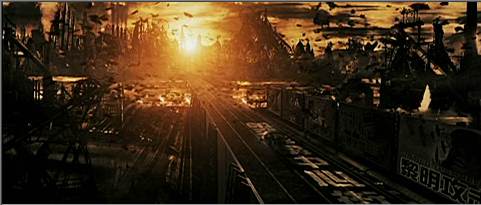
Casshern takes place in a very mechanized dystopian alternate future, in which the forces of Europa and the Greater Eastern Federation have been fighting a 50 year war for dominance. The Greater Eastern Federation has finally established control over the Eurasian continent, and now has to deal with the horrid side-effects the endless years of a chemical, biological, and nuclear war. The earth’s environment is in shambles, most of civilization has been wiped out and people usually wear protective masks when venturing outside.
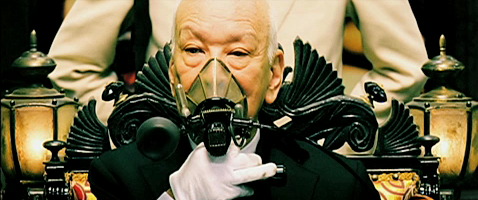
Its in this environment that Dr. Azuma, a genetic scientist, comes up with a solution to the maladies. He says he has discovered special “neo-cells” that can regenerate human tissue, and in effect, can create “replaceable parts” for the human body. An aging General with serious health problems jumps on this solution and sets Dr. Azuma up with a lab funded by the military. Casshern centers around the life of Dr. Azuma’s son Tetsuya, who in rebelling, decides to join the army. Unfortunately, he finds out that war is truly hell, and eventually ends up dying. His ghost comes back to say goodbye to his mother and fiancee, but things don’t go as planned. Unfortunately, Dr. Azuma’s research is not going very well. To extract more “Neo-cells,” the military ends up engaging in ethnic cleansing of the oldest part of Eurasia - sector 7. They bring back the body parts for the good doctor to use in extracting the Neo-cells.
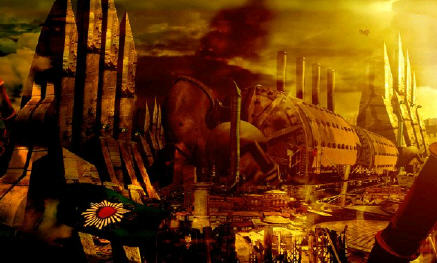
We find, however, that Sector 7 is inhabited by an ethnic group who were devout followers of a Gaurdian Spirit called Casshern. Casshern decides to make his presence felt and sends his lightning bolt down from the heavens, right into Dr. Azuma’s lab, and gives the Neo-cell “pool” the ability to bring the dead body parts back to life. After massive amounts of zombie-like people (later referred to as neo-sapiens) emerge from the pool (sparking the military to go all out in killing them), Dr. Azuma gets the idea that if he places his son Tetsuya in the pool, he will come back to life as well. This works, and Tetsuya gets reborn, but as a faster, stronger version of himself, just like the newly formed “neo-sapiens.”
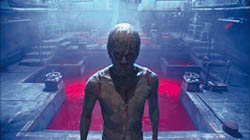
After the military hunts down and kills virtually all of the neo-sapiens, the few remaining Neo-sapiens escape to Sector 7, and after a cry for help, their prayers are answered when the Gaurdian Casshern sends them down an ancient stronghold, completely with robot warrior making capabilities. The rest of the movie involves the ongoing conflict between the Neo-sapiens and the Greater Eastern Federation, and the role that Tetsuya (who later takes the name Casshern when defending the local people) and his family plays in it. There is also a really nice love story that takes place between Tutsuya and Luna. They apparently have been fated for one another since birth, and will continue to be together throughout time.
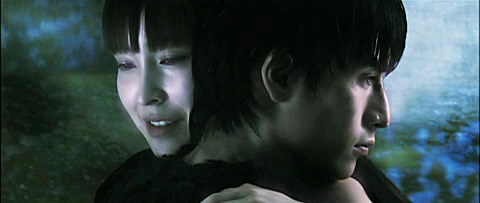
The Visuals: Casshern has some of the most astounding visuals on film. More impressive is the use of various color palettes and textures to represent various themes in the movie. Death is represented by streaking white aura around a person; war is represented in a black and white pixilated look; Impending doom is represented in yellow; green represents life; the Neo-sapiens have the dark blue and bright red colors, etc. Truly, the diversity in visual effects is the strong highpoint of the movie. Also, I found the choice of music accompaniment consistently terrific. The choices really add to the mood. Combined with the astounding visuals, we really get a tour-de-force type “blow you away” affect. . Casshern is also heavily laden with symbols and philosophical meaning. In addition to having a strong antiwar and anti-technology message, Casshern gives us interesting religious musings, and some thoughts on implications for cheating death, and a pretty powerful message for the need for co-existence with others. Most interestingly, Casshern is able to show pain and suffering on the individual “little person” level, and show how this affects the large scale picture.
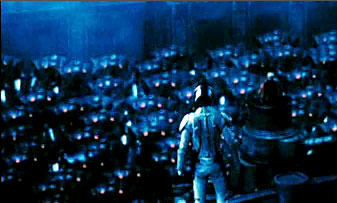
Overview: While difficult to understand (let me know if you want me to post a “page 2 spoiler” on this to explain it - it really is a very cool story), Casshern is simply an awesome picture that will develop a huge following over the years. Take the time to understand this, and you should love it. It is NOT a happy picture though, and is very emotional in tone.
~See movies similar to this one~
Tags: cyberpunk movie review
Year: 1995
Directed by: Terry Gilliam
Written by: Chris Marker, David & Janet Peoples (screenplay),
IMDB Reference
Degree of Cyberpunk Visuals: Very High
Correlation to Cyberpunk Themes: Very High
Key Cast Members:
James Cole: Bruce Willis
Kathryn Railly: Madeleine Stowe
Jeffrey Goines: Brad Pitt
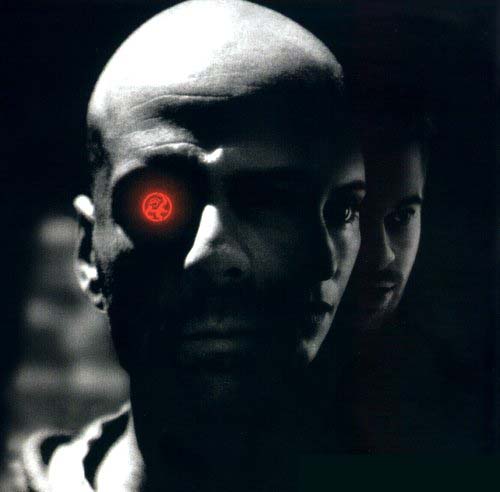
Overview:Twelve Monkeys is yet another tour-de-force from film maker Terry Gilliam. Done as a remake to the very innovative experimental French film, La Jetée, Gilliam is able to take the same notions of time travel, dystopic futures and personal trauma and love, and wrap it into a truly riviting package.
Because of the similarities, I have reviewed this movie in-depth in combination with La Jetée (these two movies truly go together). Please check it out:
~See movies similar to this one~
Tags: cyberpunk movie review
Year: 2003
Directed by: Moon-saeng Kim, Park Sunmin
Written by: Moon-saeng Kim et al.
IMDB Reference
Degree of Cyberpunk Visuals: Very High
Correlation to Cyberpunk Themes: High
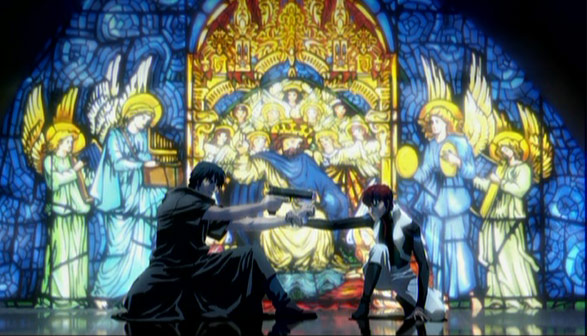
Overview: More often than not, most of the best scifi movies are coming from other countries. Anime is no exception. Wonderful Days (Called Sky Blue in some US locations) is a visual masterpiece of 2D/3D blended animation. While movies like Sinbad, with its wonderful background, but completely stuck on 2D characters shows us the low-end of this spectrum, Wonderful Days is a terrific example of the best in 2D/3D blended animation. This futuristic cyberpunk tale is not the most original, but is done more than well enough to allow to you be totally “wowed” by the visuals and incredible 3D positional sound.
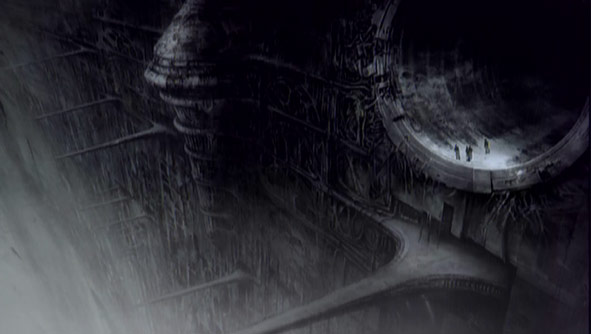
Wonderful Days takes place in a dystopic future in the year 2140. The world has been decimated and ravaged by war, reckless exploitation of the earth and over-pollution. Clouds have all but blocked out the sun and human civilization is on the brink of elimination. In this chaos, a group of elites have developed a method of using the pollution to create an energy source, and have used this to build a magnificent city called Ecoban.
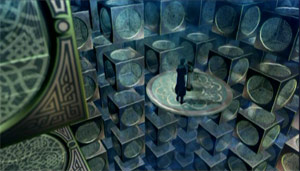 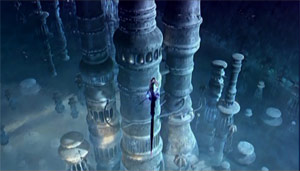
Thousands of Refugees have flocked to the Marr, the outskirt wasteland of this Ecoban in the hopes of gaining entrance, but unfortunately this has become a society of the elite and the masses. Instead, the citizens of Ecoban use the Marr as their personal slave labor to work the machines which keep Ecoban running. Life is cheap for the Marr, and the Ecoban elite care far more about their power generation than they do the welfare of the Marr. Unfortunately for the citizens of Ecoban, it appears as if the earth is starting to recover, and the level of pollution is dropping. The governing council has decided to use any means possible to maintain pollution levels to keep their hold on power.
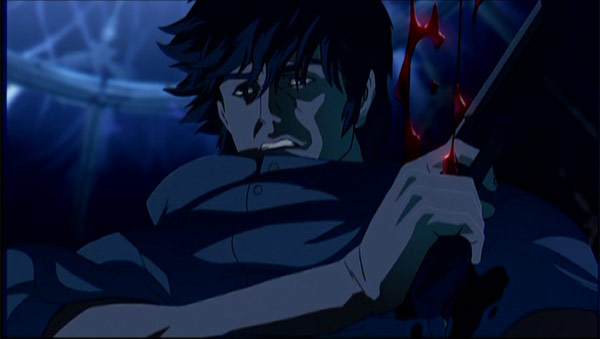
On a more personal level, this story revolves around three people, who knew each other as children living in Ecoban, but are now adults.
- Jay - a cute female captain of the Ecoban guard, who has begun to
doubt the system she supports.
- Shua - who was cast out of Ecoban as a child under dubious circumstances, only wants to show his adopted kid brother of the streets, Woody, what a blue sky looks like. He saw this once as a child with Jay, and has spent his life trying to overthrow Ecoban in order to see it again.
- Cade - the security commander of Ecoban, who is deeply in love
with Jay.
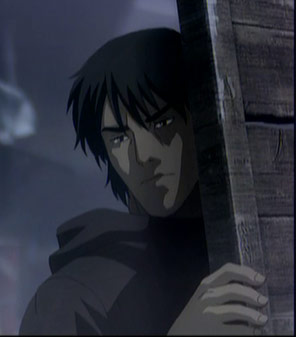 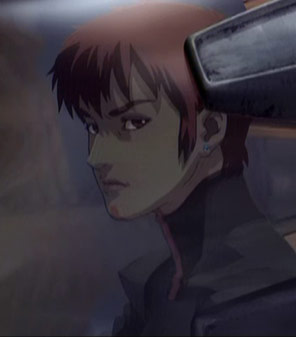
Shua, with the help of a aging Ecoban Engineer-turned resistance leader named Dr. Noah, who was involved in the creation of Ecoban’s power source, has infiltrated Ecoban’s key computer, the Delos System. There he hopes to get information to learn how to destabilize and destroy Ecoban. Unfortunately, he sets off alarms, and is forced to escape, and ends up facing off against his former best friend Jay. After he escapes, Jay seeks him out in the Marr, and they eventually re-establish their friendship, and eventually their love for one another. Meanwhile, Cade, with the help of the Malevolent Commander Locke will stop at nothing to protect the city he loves. When he finds out that his former rival Shua is involved, and that he is re-established contact with Jay, he only has one course to pursue - the total destruction of Shua and the resistance.
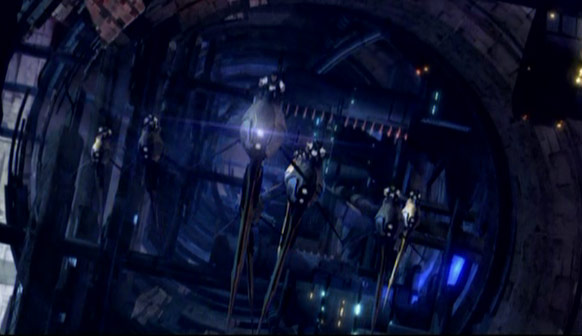
The Cinematography:While the story is by no means original, the cinematography is simply stunning on every level. Wonderful Days uses real film-like effects to increase the “realness,” believability and engagement far more than any animation I’ve seen. We get everything from the use of out of focus backgrounds, changing focal points, lens flares, jerky camera movements, and incredibly interesting perspective shots. On top of this, we get wonderfully rendered raindrops, rendered under-water explosions intermixed with hand drawn fire, and the most incredible array of deep and vibrant color effects in virtually every scene.
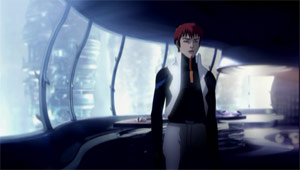 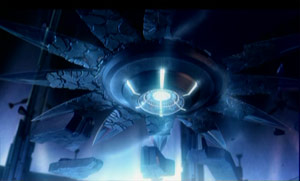
And while all this is astounding, what truly blows you away is the quality of the intermixing of 2D and 3D animation. Its almost hard to explain how well the 2D animation is blended, especially if you’ve seen something like Sinbad, which almost just layers the 2D on top of a background like velcro puppets on a background. Here we get blended effects that truly serve to tie the 2D with the 3D animation. Wonderful Days is simply the best out there at this type of animation.
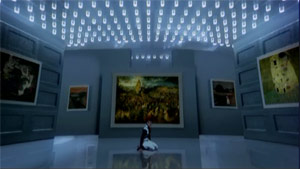 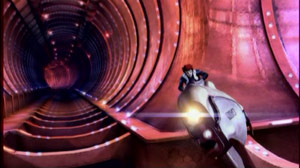
Sound Effects: While the cinematography is the real crown of this movie, the sound effects aren’t far behind. Truly, this is the best use of positional surround sound I’ve heard in an anime. We have wonderful “swoop” sounds by the motorcycles that are as good as live action racing movies, realistic explosions complete with pieces flying at you, detailed gunfire and wind sounds, and more importantly, a clear level of care throughout that rarely is equaled. As an interesting effect, the selections in the score are almost disconcerting in how different they are. We have everything from rock music to a wonderful use of opera at the end for emotional building.
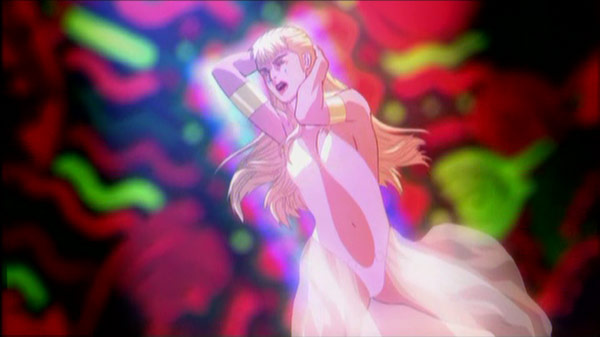
Is this Cyberpunk? You bet it is. While we don’t have the traditional merging of man and technology, all the other elements are here in spades. We get a glorious depiction of a the seedy underground, the powerful elite, impressive hacking, a wonderfully rendered dystopia, flawed heroes, and most importantly - style in abundant quantities!
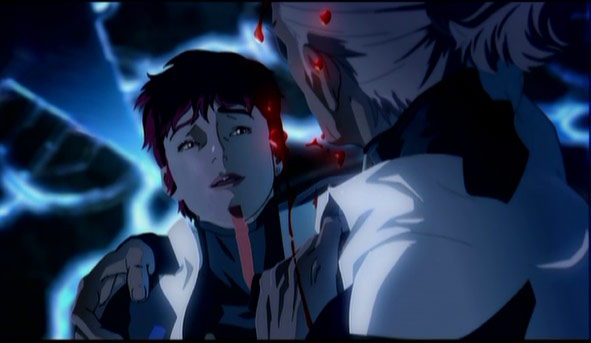 ] ]
The Bottom Line: If you’re interested in seeing the best in immersive scifi anime, Wonderful Days is a fine choice. While it doesn’t have close to the philosophical depth of Oshii’s movies, the story moves along and the immersive action is simply breathtaking. You truly do think you’re watching a continual piece of art go across the screen. And again, while the story is neither complex nor innovative, it is decently well done, especially if you dig cyberpunk-type themes. However, the quality of the cinematography and the intense care given to this film easily raises Wonderful Days up one of my favorite all-time cyberpunk movies.
Get this for the visuals and overall cyberpunk style. Wonderful Days truly deserves to be seen by all.
~See movies similar to this one~
Year: 1988
Directed by: Katsuhiro Ôtomo
Written by: Katsuhiro Ôtomo (comic), Izô Hashimoto
IMDB Reference
Degree of Cyberpunk Visuals: High
Correlation to Cyberpunk Themes: High
Key Cast Members:
Tetsuo Shima: Nozomu Sasaki (voice)
Shôtarô Kaneda: Mitsuo Iwata (voice)
Kei: Mami Koyama (voice)
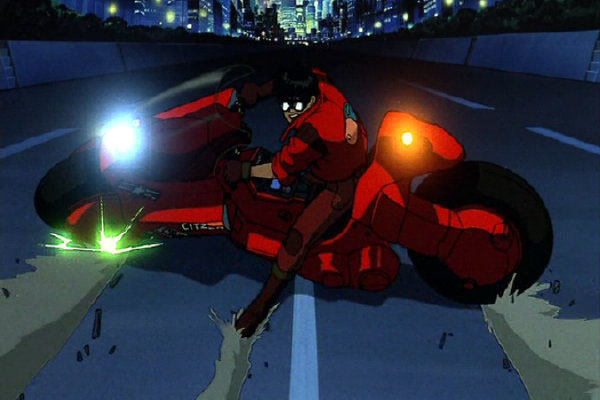
Overview: Many consider Akira to be the start of modern Japanese anime. In comparing Akira with Appleseed (also from 1988), I tend to agree. Appleseed represents high quality earlier anime, whereas Akira is truly something different both in tone and style. Akira definitely strays to the “punk” side of cyberpunk, but has full clashes with the corporate control element and technology run amok.
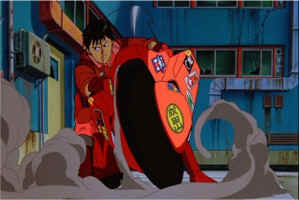 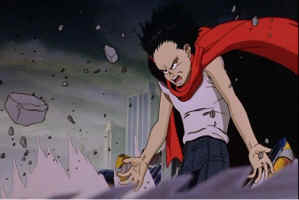
Akira’s story centers around Tetsuo, a member of a biker gang in the year 2019. Along come a group of military scientist types who look to stretch the boundaries of human capability by engaging tetsuo in experiments. Unfortunately for them, the experiments prove far too successful to the point that the develop an all-powerful monster that rages out of control.
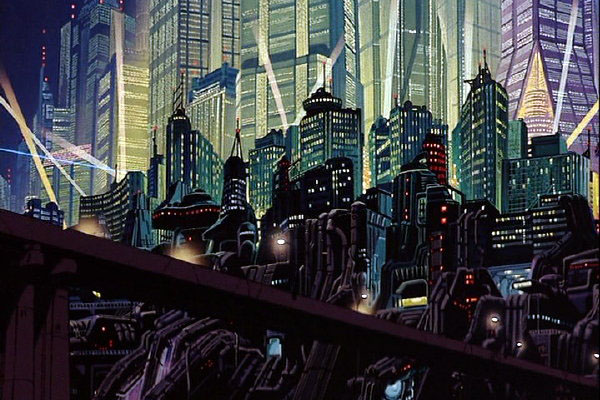
The Bottom Line: Akira has terrific adult visuals and a great sound track. As a personal preference though, I wasn’t as thrilled with the later half of the movie. Some love it, I didn’t nearly as much. There seems to be a debate where people either love this or Ghost in the Shell (guess which one I love?). It almost seemed DragonballZ-like, but again, this is also personal preference. Regardless, Akira is a true giant of anime and should be considered required watching for anyone who wants to learn more about cyberpunk or anime.
~See movies similar to this one~
Tags: cyberpunk movie review anime
Year: 2003
Directed by: Byung-chun Min
Written by: Byung-chun Min
IMDB Reference
Degree of Cyberpunk Visuals: Very High
Correlation to Cyberpunk Themes: Very High
Key Cast Members:
R: Ji-tae Yu
Ria: Rin Seo
Cyon: Jae-un Lee
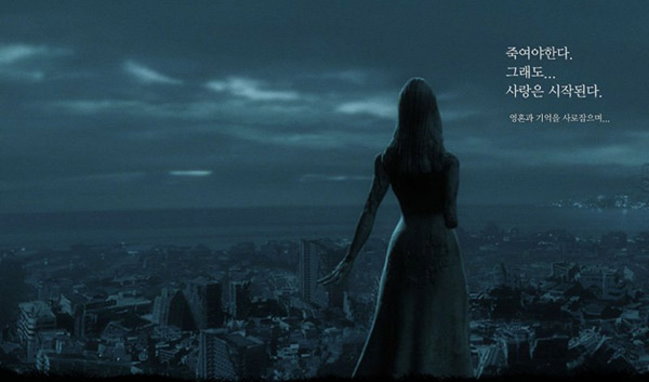
Overview: Natural City is a high priced attempt by the Korean movie industry to break into the Scifi Genre. The quality of the effects in Natural City clearly shine, both in the absolutely terrific set pieces, the painted backgrounds and the very realistic future setting. This is a cyberpunk movie to its core, with every possible aspect of cyberpunkness oozing from every pore of this movie. We get cyborgs, genetically engineered and cybernetically enhanced people, dominating corporations, theft and greed, seedy underground people and scenes, information access issues, and MASSIVE cyberpunk style. But truly, the reason Natural City rates this high is the absolutely wonderful cyborg character study in exploring issues of humanity.
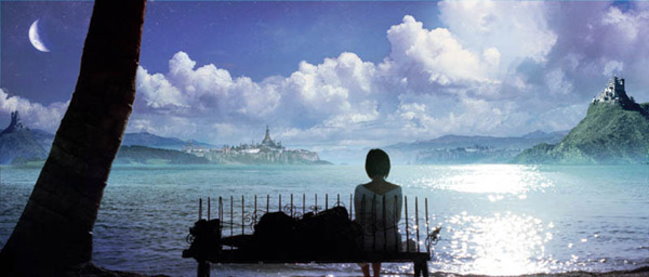
The Setting: Natural City as a title is 180 degrees from what you get in a setting - nothing is real here. In this dystopian setting, genetic engineering and cyborg development have become an accepted way of life. Pretty much everyone in this city lives a miserable existence, in fact, its expected that life is pain. Vacations are taken in the equivalent of a Star Trek Holodeck type machine. The ultimate dream of everyone in this city is to become rich enough to retire to a floating hotel called Muyoga (see the picture immediately below), which advertises that it can erase your current memory and place you in a "virtual" life of your own choosing. This is extremely interesting, especially when compared to Oshii’s Avalon, in which one view of the the "ultimate" life is one where you are in a simulated reality of your own mind even though your body is a slobbering mess in the "real" world.
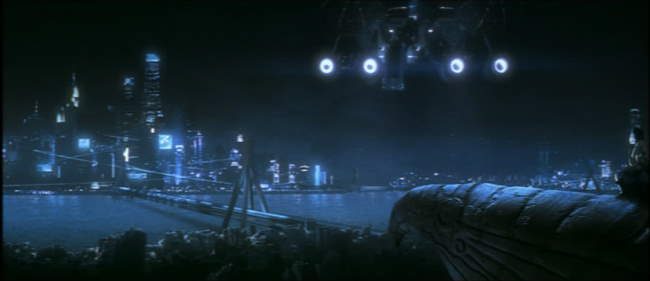
In Natural City, Cyborgs perform a myriad of societal functions - everything from entertainment and dancing, to restaurant helpers to working on the police force. To perform all these functions effectively, Cyborgs have a degree of self-awareness. This causes significant complications when their expiration date nears, as they know what it means to "expire." While some of the characteristics seem vaguely familiar to another far more famous cyberpunk movie (cyborgs with expiration dates, for instance), the story itself is radically different.
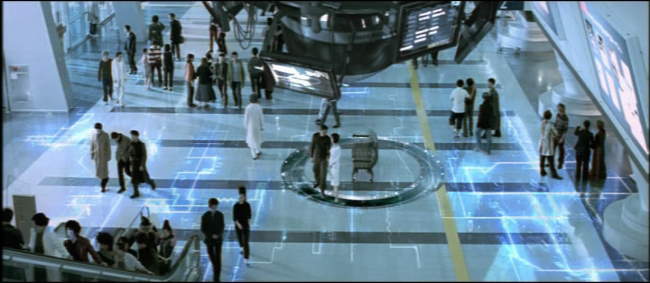
The Story: Natural City centers on the internal struggles of a highly talented cop named "R." He is tasked with finding and capturing renegade cyborgs, but ends up falling in love with a cyborg dancer named Ria who’s expiration date is only 3 days off. The movie centers on R’s compromising his principles and dealing with the cyborg underworld in a vain attempt to find a way to save his Ria. He finds a shady cyborg doctor who promises that if he finds a person with the right genetic match, he can inject part of their brain cells into Ria, which will save her. The doctor finds such a match in a street girl named Cyon.
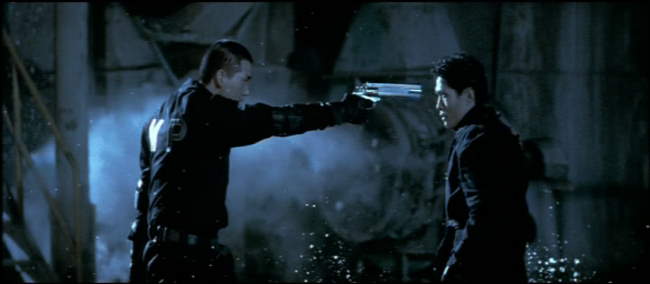
Complicating matters, R’s best friend Croy, who is also his boss and fellow police detective, has discovered his duplicity. During a raid to capture some renegade warrior cyborgs, Croy notices that R is not shooting them in the head (which kills them be wiping out their AI chip), but is instead going back later and collecting the AI chips to sell for money. Croy tracks R back to the shady doctor. Worse, one of the warrior cyborgs who escaped is also after Cyon for reasons that become all too apparent as the movie unwinds.
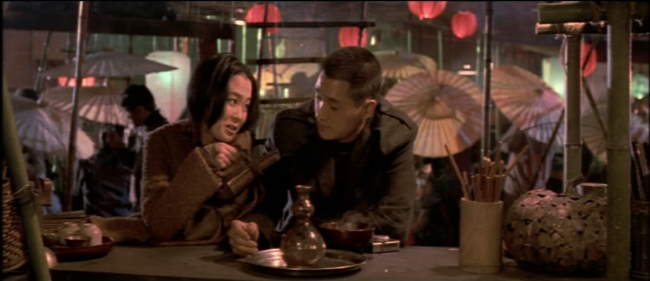
The Look: Natural City’s atmosphere is a grimy, lived-in futuristic environment. In some of the police scenes, Natural City comes across like a live-action Jin Roh movie (Jin Roh is definitely an influence for the action visuals). The high-quality and very original Scifi set pieces and occasional CG fits wonderfully, and along with the artistic backgrounds add up to a very immersive experience. The surround sound is not stunning, but is certainly decent and doesn’t detract from the experience. On top of this we get some wonderfully symbolic visuals, such as when Cyon sits atop a stone eagle statue, dreaming of life on the virtual hotel.
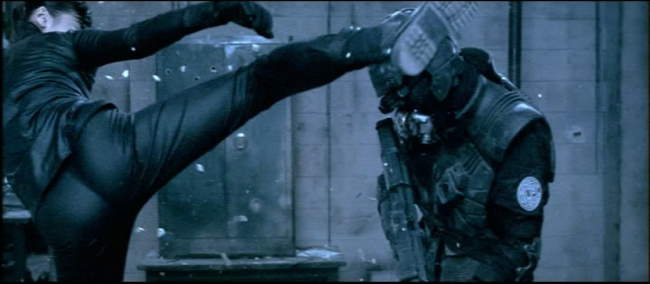
The Colors: Like most cyberpunk movies, Natural City uses one dominating color palette for the majority of the scenes. Blue is the color of choice, but varies from ultra-light to dark and dense blues. The lighter scenes usually depict high-tech human aspirations, whereas the darker scenes are left for massive action shots and for shots depicting the destruction of humanity, such as the gritty cyborg replacement lab. Every so often, we also get some really nice oranges and browns, but these colors are usually used more as chapter transitions.
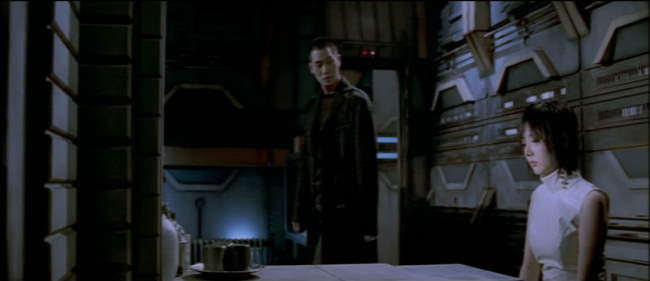
The Action: Natural City is a character exploration first, but the action and effects are on display, and in high quality. The action involves both slo-mo and high speed camera shots, along with LOTS and LOTS of blood and gore. The ending especially is somewhat of a gorefest, which is weird to see in a movie that is mostly a drama in nature. Also, near the end of the movie, we get treated to an evil, but ultra-hot cyborg warrior chick in skin tight lycra who engages in some major ass-kicking (see above for a pic of HER ass while kicking someone!). Talk about a plus! While we’re on the subject, we also get treated to some cute asian cyborg boobies at the beginning of Natural City - definitely a nice way to start the pic! (although, when you understand what the beginning boobie scene signifies it sorta takes away the fun).
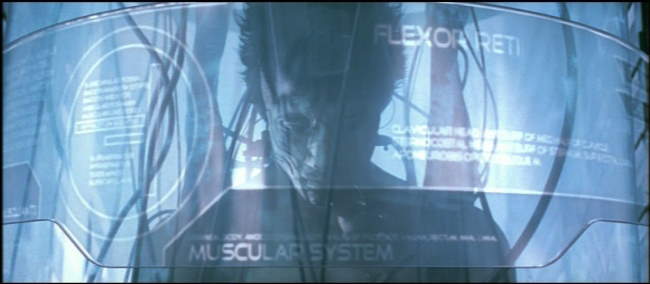
The Pacing: As I mentioned earlier, this IS a Korean movie. My wife is Korean, so I’m somewhat used to the pacing we see here. From reading a few reviews, Natural City has been panned for being way too slow and plodding in the middle. All I can say is, "Welcome to Korean Cinema." This is really a case where story telling is just different there. For a Korean, this movie is not at all slow, but has rather standard pacing, which means we get REAL in-depth and repeated scenes with the purpose of mood and detailed character study. Most important for Koreans is to be able to identify with the emotion and mood the characters are experiencing. Natural City takes the time to do this with all the main characters.
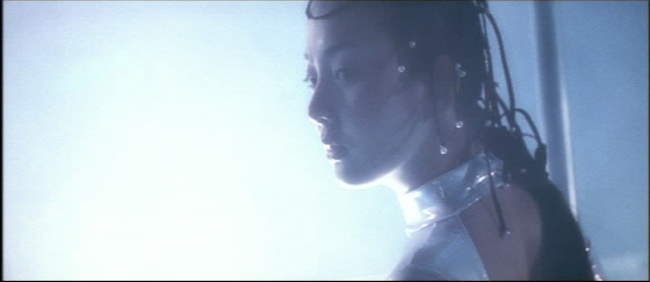
The characters really build in believability and engagement as the story progresses. At the beginning, R appears quite shallow, as does his friend and the street girl Cyon. By the end, all three, and especially Ria, his cyborg lover grow to be characters you really empathize with. The motivations for all become clear, including their virtues and flaws. The ending is also a rather "normal" Korean dramatic love story ending, which is to say, one very different from how an American film might end. Its not a feel-good movie, but then again, few Korean dramas are.
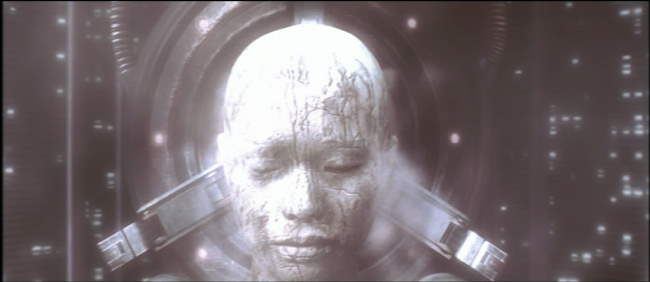
For me, the highlight of Natural City centered on Ria, the cyborg. To me, Ria captures the cyborg struggle for humanity better than any character in all cyberpunk movies save one scene (the Blade Runner’ sRoy Batty "I’ve seen things you wouldn’t believe" soliloquy, of course). While I didn’t catch this the first time through, the very beginning of the movie is told from Ria’s perspective, and then really, the last third of the movie centers on Ria (minus the action sub-plots). There are a few scenes that make it clear she "knows" what’s happening to her. She is programmed to be a dancer, but as she reaches her expiration date, she no longer can do this well. In one scene, Cyon shows her the "1 day" notice that arrives in the "Fifth Element" style mail slot. As her "time" approaches, you really do get the feeling of the Rutger Hauer speech at the end of Blade Runner, although Ria conveys this sentiment more broadly over a number of scenes and images. I want to go into this further, but this starts coming off as a spoiler, so I’ve added a more elaborative discussion of Ria’s motivations (spoilers) after the screencaps on Page 2.
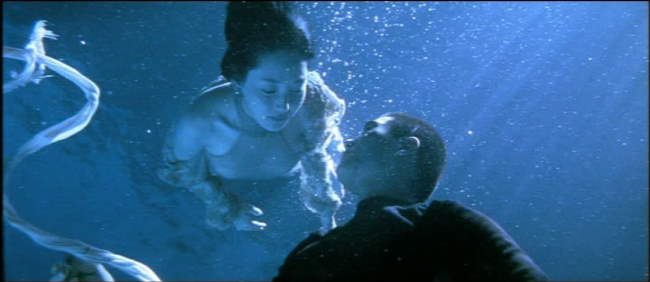
The Bottom Line: If you like cyberpunk films, the visuals alone make this a MUST SEE. If you like character studies in science fiction settings, you probably also want to see this. I truly LOVE Natural City, but be warned, the pacing is different from what you might expect. This is a Korean movie, and certainly plays like one. Also, be warned - like Wonderful Days, the ending has standard Korean Melodrama type stuff. While some might argue this doesn’t belong in the top 10, for me there’s no doubt that it does. The action and visuals are great, but Ria’s story clearly forces it there if nothing else.
Page 2: More Screen Caps and Ria’s Motivations Discussion (Spoiler)–>>
~See movies similar to this one~
Tags: cyberpunk movie review
Year: 1997
Directed by: Gabriele Salvatores
Written by: Pino Cacucci, Gloria Corica, Gabriele Salvatores
IMDB Reference
Degree of Cyberpunk Visuals: Very High
Correlation to Cyberpunk Themes: High
Key Cast Members:
Jimi Dini: Christopher Lambert
Solo: Diego Abatantuono
Naima: Stefania Rocca
Joystick: Sergio Rubini
Lisa: Emmanuelle Seigner
~Revised Review: The star rating is for the Italian language version. ~
They US Region 1 English Dubbing version only merits 6 stars
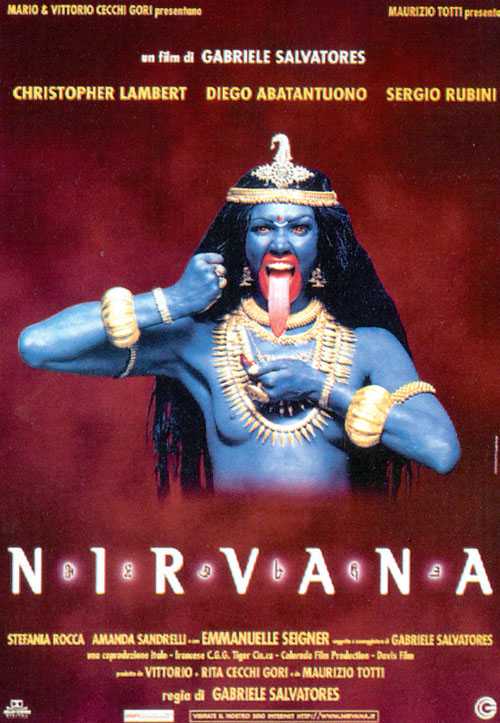
If you aren’t buying this cover, you probably aren’t getting a DVD with Italion (with English Subtitles). The US version only has English Dubbing.
Overview: Previously, my review of Nirvana, which was based on the Region 1 English dubbing only copy started as follows:
All in all a decent cyberpunk flick from Italy, but unfortunately suffers horribly from bad dubbing. The dubbing here is as bad as your average anime dubbing, and unfortunately here in the US, this is all we get.  I wish I could get a copy of this in Italian with subtitles - if I did, I’m sure this would shoot up significantly on my cyberpunk list, but alas… I wish I could get a copy of this in Italian with subtitles - if I did, I’m sure this would shoot up significantly on my cyberpunk list, but alas…
Now that I’ve purchased the Italian copy (which set me back about $30 bucks!), I still agree with my comments above - the dubbing ruined it. Truly. In Italian, the movie has the necessary spark of energy and emotion missing from the dubbed version. The story itself always held up at least decently well. What was missing is any connection to the actors. The Italian version fixes this. The picture below really captures the colorization of this film -we get lots of drab, dirty settings with shocking neon colors intermixed.
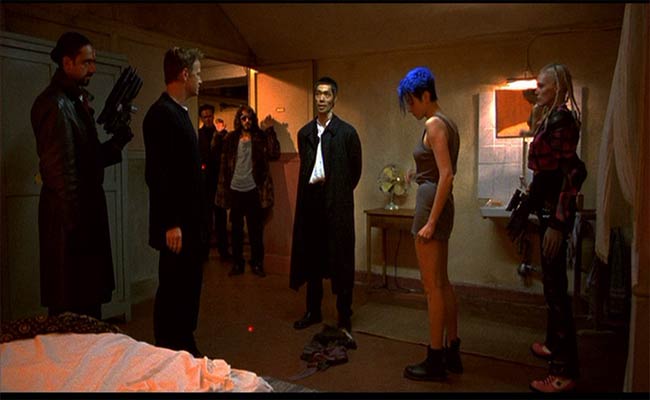
The Story: Nirvana is NOT Tron meets Blade Runner Meets Matrix as the cheesy tagline on US version of the DVD suggests. However, Nirvana is a pretty good low-budget cyberpunk flick with a strange virtual reality (VR) angle. Jimi (Lambert) is a computer programmer who is working on a VR simulation game with very realistic seeming characters. Somehow a strange virus infects his game and turns one of his VR characters into a self-aware program. The VR character has to “relive” the game sequence almost in a groundhog day type fashion, only each time he has to figure out how to avoid getting killed so he can progress further into the plot. The game is 3 days away from being distributed everywhere and the program doesn’t want to be duplicated everywhere, and worse, feels trapped in a nightmare. Lambert feels bad for the VR character and starts working to get the program deleted from corporate.
Unfortunately, this involves hacking into the corporation’s corporate system. To do this, Jimi has to go to the seedy part of town outside the barriers to find the expertise he needs. Jimi is also distraught by recently losing the love of his life, Lisa, who left him for still undetermined reasons. Jimi stumbles upon Joystick, a former cowboy (hacker), who has lost his eyesight and now has to rely on failing eye implants to see. Jimi tells Joystick that the corporate system is also home to millions in illegal funds, that can be stolen with the right hack. Joystick and Jimi work out a plan to break into the corporate system. Along the way, they meet up with Naima, a computer expert, who also has a way of bringing Jimi back to Lisa. Unfortunately, the corporate agents are on Jimi’s trail, and want the final verison of the game.
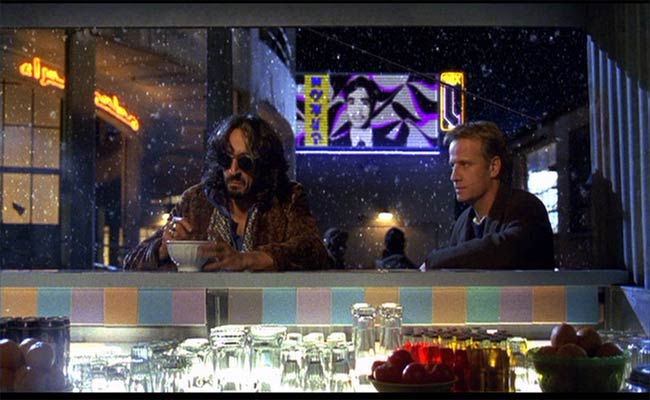
The Atmosphere: The atmosphere is similar to Blade Runner in the sense that its a seedy futuristic setting. More interesting is the Neuromancer-style cowboy hacking that Nirvana embraces. The idea that we can allow our consciousness to “ride the net” in order to break in to data systems is one that currently doesn’t jive with modern computing, but it is very motivating. There are also a number of cool cyberpunk elements in Nirvana, including eye implants, hard drives embedded in people’s brains, etc. I’ve gone ahead and made a few screencaps of this to give you a better idea of the visuals:
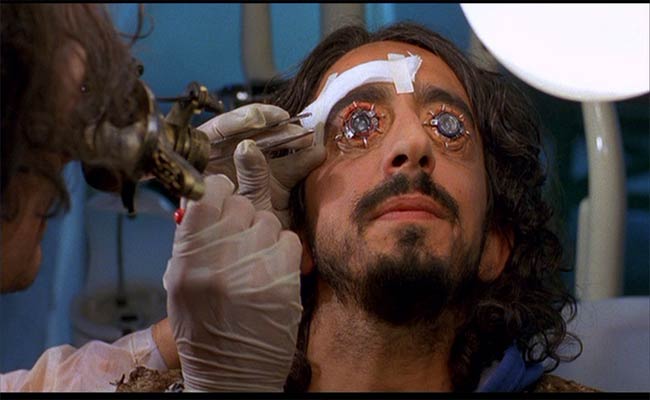
Just your average eye surgery…
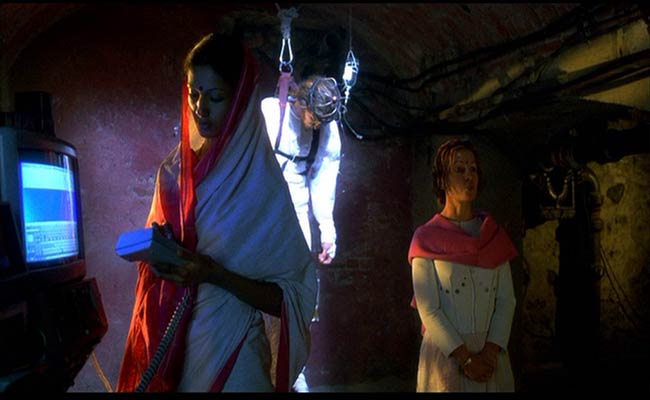
There are lots of Indian visuals here. This is really the setting.
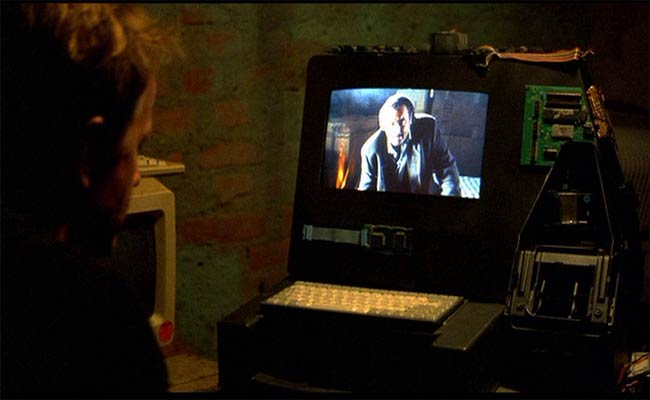
This is one of the many sequences of Lambert talking to his self-aware VR game character.
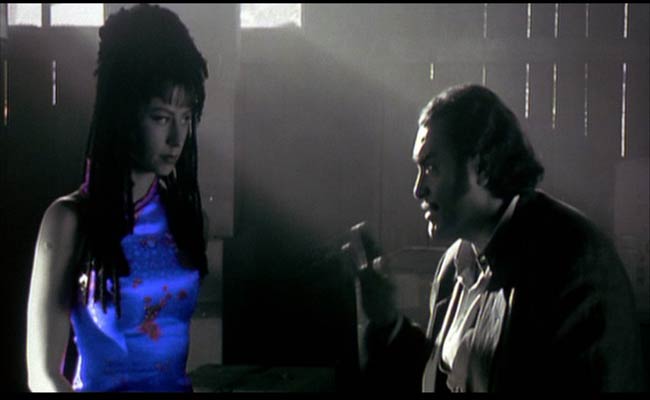
Here’s our self-aware VR character, trying to convince a non-self-aware VR whore that they are not real. This chick’s dress changes color every few seconds.
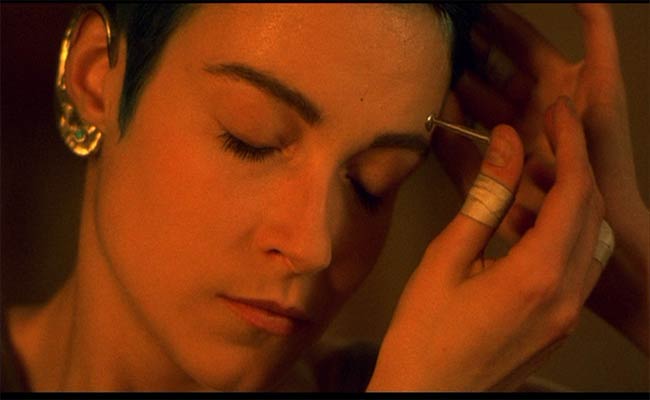
This chick is implanting a memory capture of Lambert’s wife’s memories.
The Bottom Line: If you’re looking for a really good low-budget cyberpunk movie, Nirvana is your flick - AS LONG AS you get the italian version. I’m not sure it’s worth $30 bucks, but it’s LOTS better than the dubbed version. Truly, I don’t get US DVD distributors sometimes, but hopefully this trend towards dubbing is slowly changing. Even if you are stuck with the dubbing, which pretty much ruins the story, at least the visuals are more than decent. On top of this, I truly love Lambert, so I was able to put up with it.
PS - thanks again to the comments below that enabled me to find a copy of this in Italian 
~See movies similar to this one~
Year: 2003
Directed by: Hiroshi Hamazaki
Written by: Chiaki Konaka
IMDB Reference
Degree of Cyberpunk Visuals: Very High
Correlation to Cyberpunk Themes: Very High
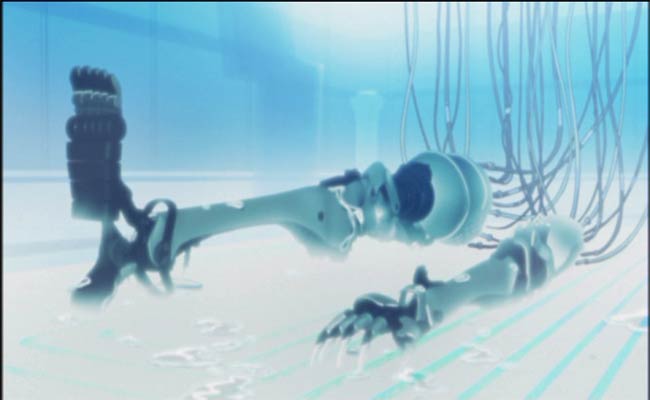
Overview: Written by one of the most prolific anime writers, Chiaki Konaka (Who also wrote Lain, Malice@Doll, Hellsing, Bubblegum Crises, etc.), Technolyze is a virtual feast of visuals wrapped up in a Lain-style fragmented cyberpunk gangster story. Like Lain, the beginning is almost non-sensical, but creates the foundation for the mood of the rest of the story.

Texhnolyze is the name for the technology to make fully integrated cybernetic limbs like those above. The story follows Ichise, a former down-and-out boxer living in Luckass, a truly disturbed city with the elite rich side and the poor slums. Ichise inadvertently crosses the local mafia (called the Organo), and ends up getting an arm and leg chopped off. But luck would have it that he’s a perfect candidate for a hot chick Texhnolyze’s doctor’s experiments in the latest Texhnolyze research. Ichise carries around a capsule containing his dead mother’s body cells, which the doctor integrates into the limbs. Ichise spends many episodes figuring out how to get revenge for how he changed, but based on discussions with a girl who can see the future, his motivations change as the series moves forward.
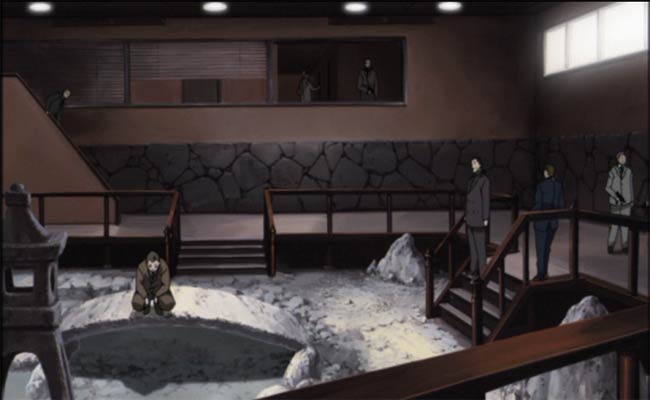
This is NOT a kids story. Every episode has LOTS of gangster-like killings. We get lots of guns and a few cool sword fights. We also get some nice Texhnolyze deaths with fists going through faces. Truly, this might be described as Goodfellas meets Serial Experiments Lain. And while I haven’t gotten the last DVD set, I’m guessing this is is NOT going to be an uplifting story.
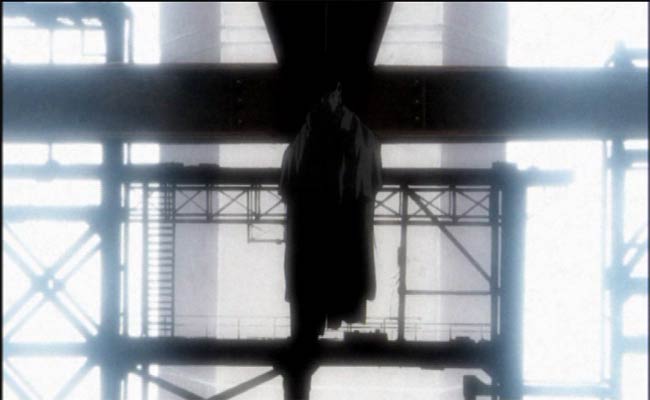
The Visuals: Unlike Lain, Texhnolyze is as Neo-noir as they come. The use of shadows is amazing. We get lots of stark white on blacks, interesting gray patterns, and lots of yellows and browns. Also, virtually every character is flawed and mysterious. While the anime is truly riveting, you won’t find yourself becoming attached to anyone. The characters simply aren’t sympathetic.
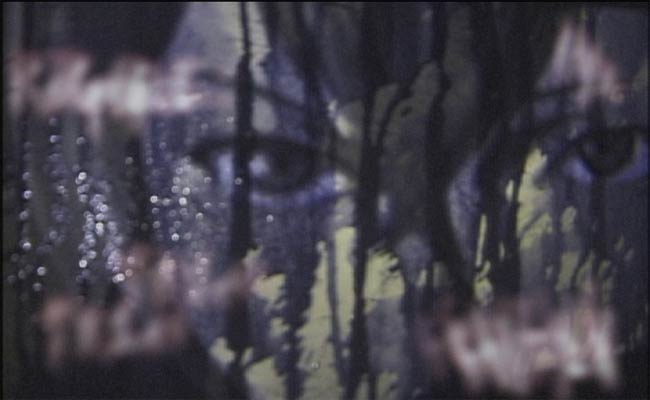
Texhnolyze is a virtual feast of visual textures and palettes. Whenever you look through a texhnolyzed person’s eyes in first person, you see almost a terminator-like display, only the screen is filled with noise. We also get the most incredibly detailed background sets. Truly, you feel like you know this city after watching a few DVDs worth of this. We also get great camera angles, with sweeping shots, extreme close-ups intermixed with psychedelic-like image merges. Top this with a terrific score and wonderful surround sound, and the WOW effect hits you in total.
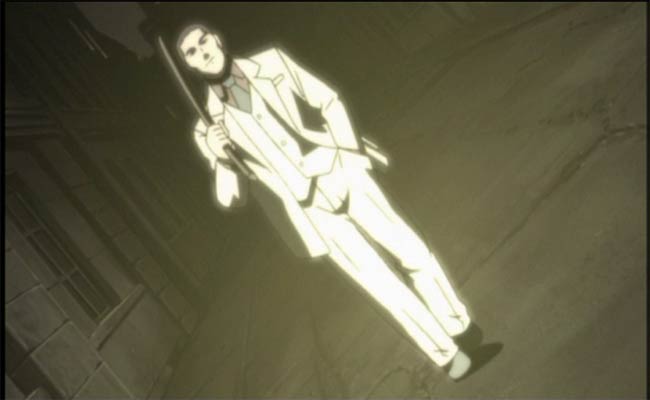
The Bottom Line: Truly, its clear that the creators of Texhnolyze wanted to make something as overtly cyberpunk as possible. They truly have succeeded. Texhnolyze is not for everyone, as the story is violent, obscure, and cold. It is however, a truly awesome and totally original cyberpunk series!
~See movies similar to this one~
Tags: cyberpunk movie review anime Texhnolyze
Year: 2000
Directed by: Keitarou Motonaga
Written by: Chiaki Konaka
IMDB Reference
Degree of Cyberpunk Visuals: High
Correlation to Cyberpunk Themes: Medium
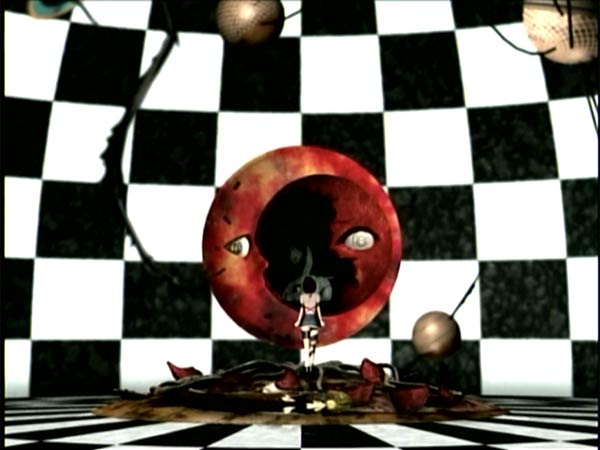
Overview: If you haven’t figured out by now that I have a soft spot for surrealist cyberpunk films, you will after this review. Malice doll is a terrific low-budget surrealist cyberpunk anime that takes place in an unspecified future, after all of mankind has been eradicated. This surrealist cyberpunk version of a pinocchio story focuses on a group of sex andriods called dolls (not unlike GITS2) living in their whore house who now simply drift through existence without any purpose. One Doll, Mallice, while exploring, encounters this strange tentacled beast who “rapes” her with about 40 tentacles (while one goes between her legs, the rest rip into her pretty much everywhere - this isn’t meant as an erotic scene, at least I don’t think so) and ends up transforming Mallice into a human. Malice then shares her “gift” by kissing all the other dolls and robots.
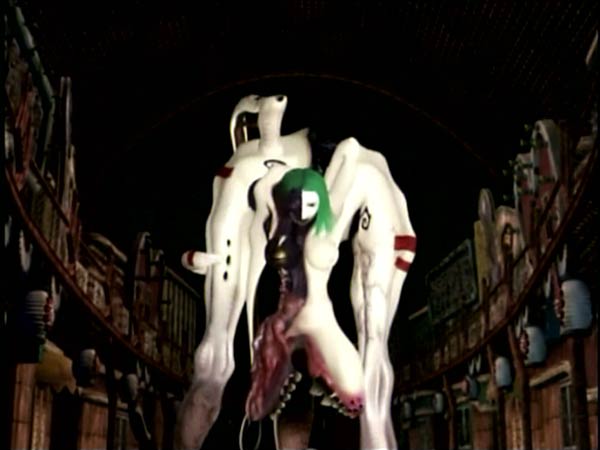
Malice@Doll is a very deep movie and traces some rather interesting notions. For instance, It challenges the notion that a doll made in man’s image, if given the chance, would choose to become a living organism that looked human - maybe they would choose something completely and utterly different. Simultaneasly, this anime also asks if you would be how you really see yourself, what would you really look like?
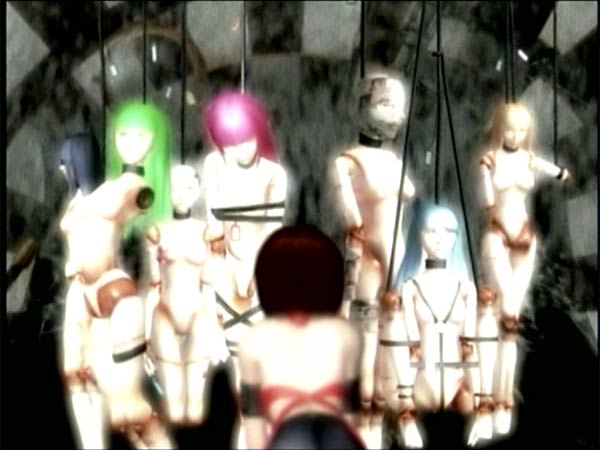
Malice@Doll virtually disappeared almost as soon as it opened for a couple of reasons. First off, it came right on the heels of Final Fantasy, a blockbuster anime. While its wonderfully shot, the animation quality simply doesn’t compare with the high budget 3D movies. Also, Malice@Doll is another one of those films that’s simply too wierd for most people, and ends up being categorized as everything from Hentai on down. Truly, this anime is two scenes removed from being a PG anime, and certainly wouldn’t qualify for anything past R. I happen to love it LOTS more than Final Fantasy though.
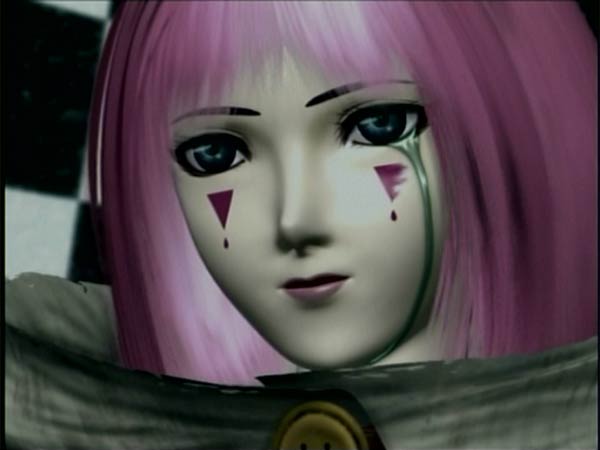
The DVD Extras: Another reason you want to buy this DVD is for its terrific extras. These include a college film class presentation on digital animation from Jonathan Clements - Co-Author of the Anime Encyclopedia. This is flat out terrific. In addition to tracing the change in Japan from cell animation to 3D animation (and the effects this had on the industry), Clements shows how Malice@Doll is one of those films that actually uses story elements to turn its technical weaknesses into strengths.
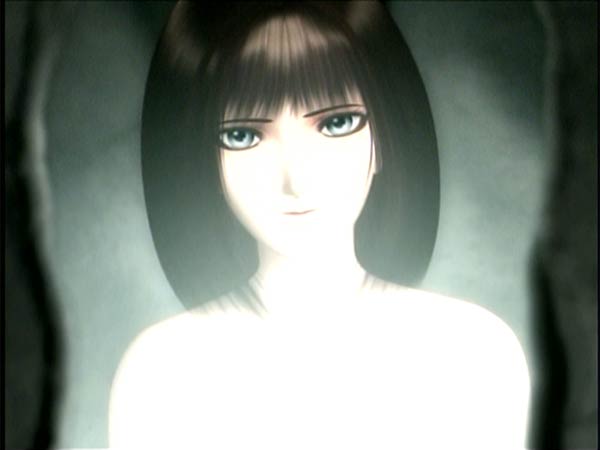
For instance, although their capalities for doing high quality stills are there, Motonaga didn’t have the equipment to do fluid movement. He solved this with a “story” solution - he made the movie about android dolls, who are SUPPOSED to be jerky in their movements. For the “human” scenes, they used cell animation as highlights - this makes for a striking difference in the animation (See shot above).
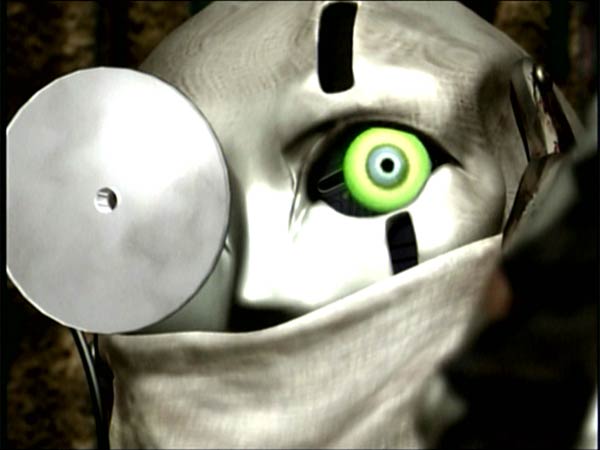
The Bottom Line: Truly, aside from the surrealist story, the reason to watch this is for the visuals. A lot of the visuals in Malice@Doll almost remind you of a Salvador Dali painting. The diversity is such that I could have taken about 40 completely different screencaps here. BTW, while Amazon sells this for 22 bucks, Deepdiscountdvd sells it for $14.
~See movies similar to this one~
Tags: cyberpunk movie review anime
Year: 1982
Directed by: Ridley Scott
Written by: Philip K. Dick (Novel), Hampton Fancher & David Peoples
IMDB Reference
Degree of Cyberpunk Visuals: Very High
Correlation to Cyberpunk Themes: Very High
Key Cast Members:
Rick Deckard: Harrison Ford
Roy Batty: Rutger Hauer
Rachael: Sean Young
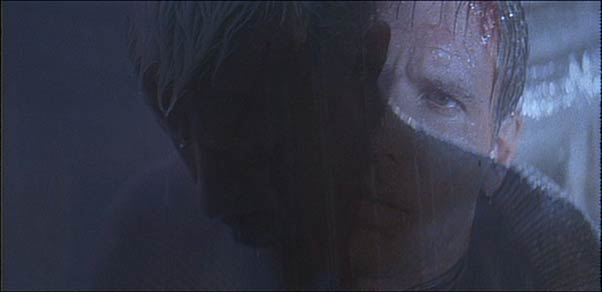
I’ve seen things you people wouldn’t believe. Attack ships on fire off the shoulder of Orion. I watched C-beams glitter in the dark near the Tannhauser gate. All those moments will be lost in time, like tears in rain. Time to die…
Overview: If you read a lot of the reviews from others about movies on this site, you’ll find that over half of them reference Blade Runner in some way, other in the visuals or issues discussed. Along with Gibson’s Neuromancer, Blade Runner did more to establish cyberpunk as a genre. The fact that Blade Runner came two years prior to Neuromancer is rather interesting. Truly, this film set the standard for the near-future film noirs sub-genre we call cyberpunk.
Not too dissimilar to the wrath that greeted Metropolis’ release, Blade Runner was not an instant hit. Instead it grew from being critically panned to a cult classic, to now, where its well on its way to being considered a timeless classic.
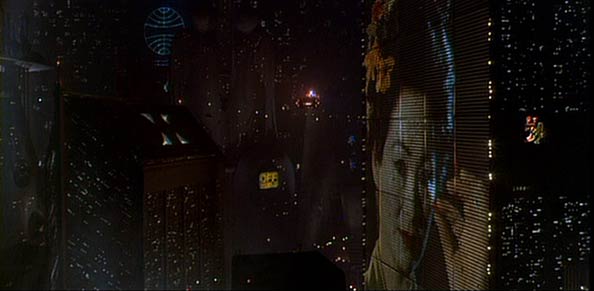
Commerce is our goal here at Tyrell. More human than human is our motto
The Visuals: The visuals in Blade Runner are simply stunning. We see corporate pharaohs ruling a society containing manufactured slaves from their Egyptian style pyramids, while we see rot and decay on the streets below. Noir-style beige and blacks dominate the screen, but are often supplanted by shocking neons. In Blade Runner, we see and Earth in ruin - a place that people are eager to leave. Only the poor and problematic are left on this rain-soaked dystopian planet that has been raped of any semblance of natural existence. The Earth is now almost completely devoid of trees and animals, which are now replaced with artificial ones for the pleasure of mankind.
The Story: Technology and corporate power are clearly the cause for this downfall. Genetic engineering has run rampant, and is combined with advanced organic computing technologies. It is in this world that we find a cast of flawed characters. Nobody is pure, nobody pristine. They are all a product of the environment they live in.
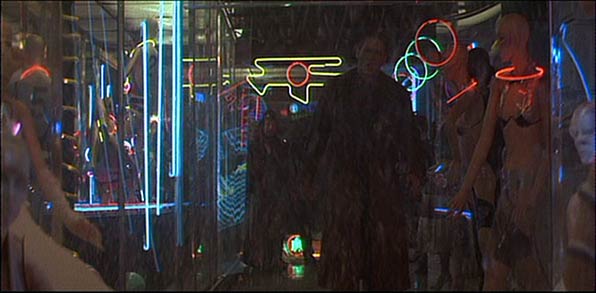
Replicants are like any other machine - they’re either a benefit or a hazard. If they’re a benefit, it’s not my problem.
To augment humanity’s needs and desires, replicants, or genetically engineered humans imbued with artificial intelligence have been developed. They serve many important roles including protection, pleasure slaves, and hard labor for the most dangerous environments. While replicants start out as rather straightforward and useful machines, over time, they start to develop awareness - their own personality, and eventually, free will and a desire for self-preservation. Because they are defined as property, Replicants are given a 4-year lifespan, which is enforced upon inception, and is irreversible.
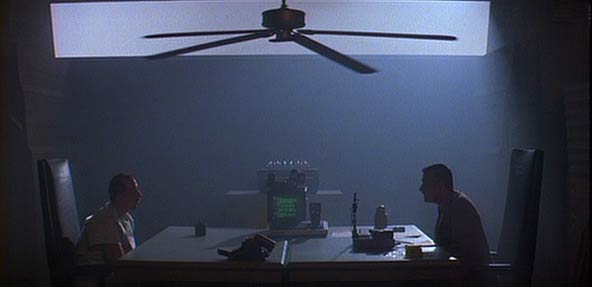
My mother? Let me tell you about my mother!
It is in this world that we encounter Deckard (Harrison Ford), a Blade Runner. Blade Runners are cops who hunt down Replicants. At the beginning of the movie, we find that Deckard has supposedly retired from the business.I say supposedly here, because if he is a replicant, then really, he has been imbued with false memories as well, and in fact has never been a blade runner prior to this. Really, he is just filling in as a laborer fulfilling another job that is too dangerous for humans.
Deckard is brought back in to "retire" 4 runaway "skin jobs" (replicants) who have murdered humans off-world and have escaped to Earth. Apparently, they seem to be interested in coming back to their creators - the Tyrell corporation. The story expands from there, and truly touches on some wonderful questions concerning ethical dilemmas that most certainly will arise in the future.
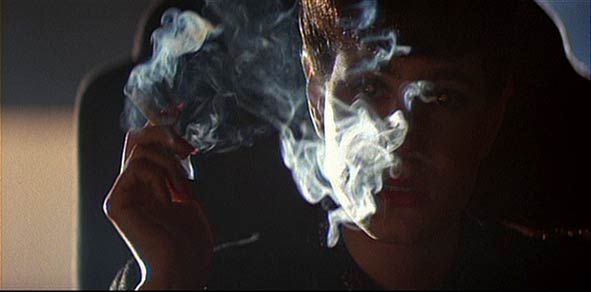
Are these questions testing whether I’m a replicant or a lesbian, Mr. Deckard?
I’m not in the business. I AM the business… Deckard encounters Rachael (played wonderfully by Sean Young), a replicant who during the movie discovers her true nature. Blade Runner does a masterful job of exploring the questions and emotions surrounding this. We see Rachael’s theme echoed in Natural City, Armitage, Thirteenth Floor, Ghost in the Shell, Serial Experiments Lain, Malice@Doll, the Animatrix, I, Robot, and others. This question about what degree artificial life forms are human is a central theme of the cyberpunk genre.
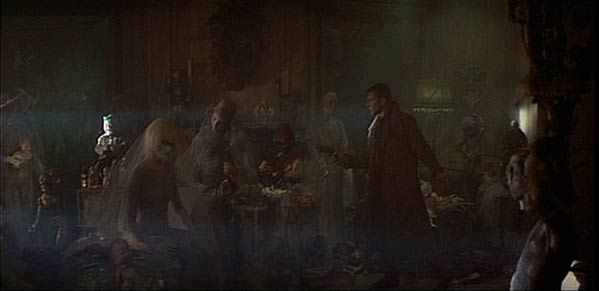
What is Human? While other movies have been terrific in exploring this, Blade Runner still sits at the top of the list, both for Racheal, and for Roy Batty, the leader of the renegade replicants. Roy’s monologue near the end (see the quote at the top), which was supposedly adlibbed by Rutger Hauer, captures in a single moment the ethical dilemma with creating sentient life. If they have freewill, can they really be considered property? And if they aren’t property, what are they, exactly?
Blade Runner uses mannequins and toys as its set piece for representing this dilemma. In Blade Runner, corporations create these glorified toys - moving mannequins if you will, to meet the needs of society, yet while the toys themselves are clearly a product of the society just like all the other noir characters, are they truly nothing more? And if we do consider them to be on par with humans, what obligations do they have to their creators, who invested time and money in their creation?
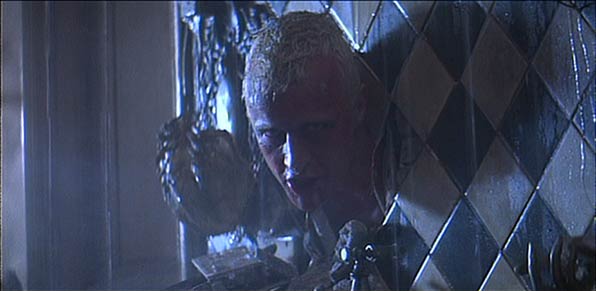
The light that burns twice as bright burns half as long - and you have burned so very, very brightly, Roy.
The Bottom Line: On top of all this philosophical questioning, we get some great noir-detective-like action and suspense. Roy Batty is truly a badass. Deckard’s pursuit of him is a very fun engagement, as is the climax. Its flat out terrific. The pacing is wonderful, the visuals are astounding, and the story is enthralling. By now I’m guessing most have seen this cinematic masterpiece, but if not, you are truly in for feast!
Page 2 - More Screen Captures–>>
~See movies similar to this one~
Tags: cyberpunk movie review
|





























 ]
]










































